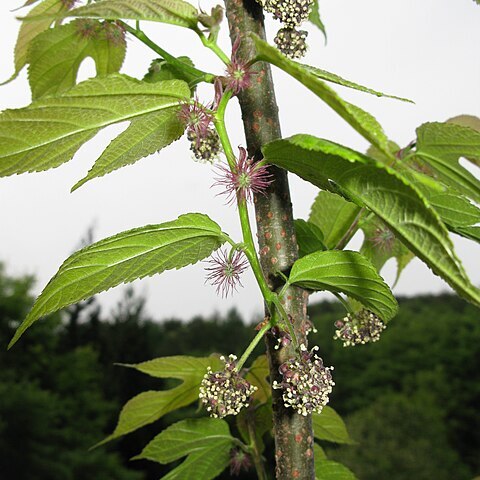A shrub. It grows 2-4 m tall. It has a spreading habit. Plants are separately male and female. Branches are hairy when young. The twigs are red. The leaf stalks is about 1 cm long. The leaf blade is oval or heart shaped and 3-7 cm long by 3-4 cm wide. Leaves can be 25 cm long. They are either simple or have 3 lobes. There are triangular teeth along the edges. The male flowers are in very short clustered catkins. The female flowers are in small heads. The fruiting heads are red and hairy.

